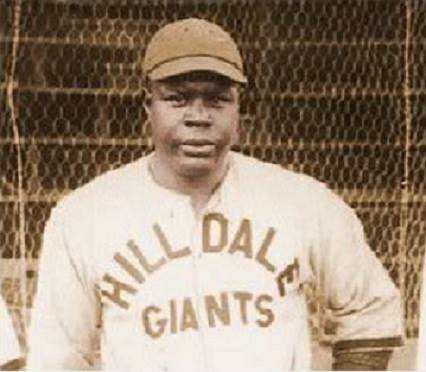Baseball History Comes Alive Now Ranked #2 by Feedspot Among All Internet Baseball History Websites and Blogs!
Guest Submissions from Our Readers Always Welcome!

John Beckwith may have been the Mike Schmidt of the Negro Leagues; he was a right-handed dead pull hitter, and could hit the ball as far as anyone who ever played. He hit one ball completely out of Redland Field in Cincinnati (500+ feet), cleared the left field bleachers at Washington D.C.’s Griffith Stadium, striking a sign 460 feet from home and 40 feet off the ground, and once hit a homer while swinging one-handed. Beckwith supposedly swung a 38-inch, 45 ounce bat, but still got around on the fastest pitchers in baseball.
Beckwith grew up in Louisville, Kentucky, and started his professional career with the Montgomery (Alabama) Grey Sox, the same team that Willie Mays would start with 30 years later. After a few seasons with some mediocre teams, Beckwith joined the star-studded 1922 Chicago American Giants, under manager Rube Foster, and slammed seven homers with 50 RBIs in only 59 league games, a rate that would give him about 20 homers and 140 RBIs in a full Major League season.
Until Cal Ripken came along, the 6′-3″ Beckwith may have been the tallest shortstop to ever play professionally. And, at close to 230 pounds, he almost certainly was the heaviest. Despite his size, Beckwith was a slick fielder with a strong arm, and he also had great seasons at various other positions, especially third base and catcher.
Unlike the aforementioned Mike Schmidt, Beckwith was not a great teammate, had a surly disposition, and was frequently traded or released despite immense talent; over 23 seasons, Beckwith played with at least 18 teams. Beckwith could be lazy at times and often put out less than his full effort, but also was tough enough to play half a season with a broken ankle. Beckwith was also one of the top drawing cards of the 1920s.
Beckwith used his great size not only to blast homers, but also to fight with teammates and opponents. After pitcher Bill Holland got upset with Beckwith for making an error behind him during a big game, the hefty slugger responded by knocking him out with a single punch.
In his prime, Beckwith averaged over .300 at the plate with 40 or more homers, and broke .400 several times. One season Beckwith batted over .500 with 50 homers in league and non-league games combined!
Despite his talent, Homestead Grays’ owner Cum Posey once traded him, with a newspaper article explaining, “In the acquisition of Beckwith, formerly of the Homestead Grays, the Baltimore Black Sox have one of the greatest performers in the Eastern League. Manager Posey himself admits that Beckwith is a star but due to personal reasons the two agreed to disagree and parted.”
Eventually, age and alcohol abuse caught up to Beckwith, and after 1933 he was a shell of his former self. He did continue, however, to play for several lesser semipro teams.
Beckwith died too young, at age 54 in New York City.
